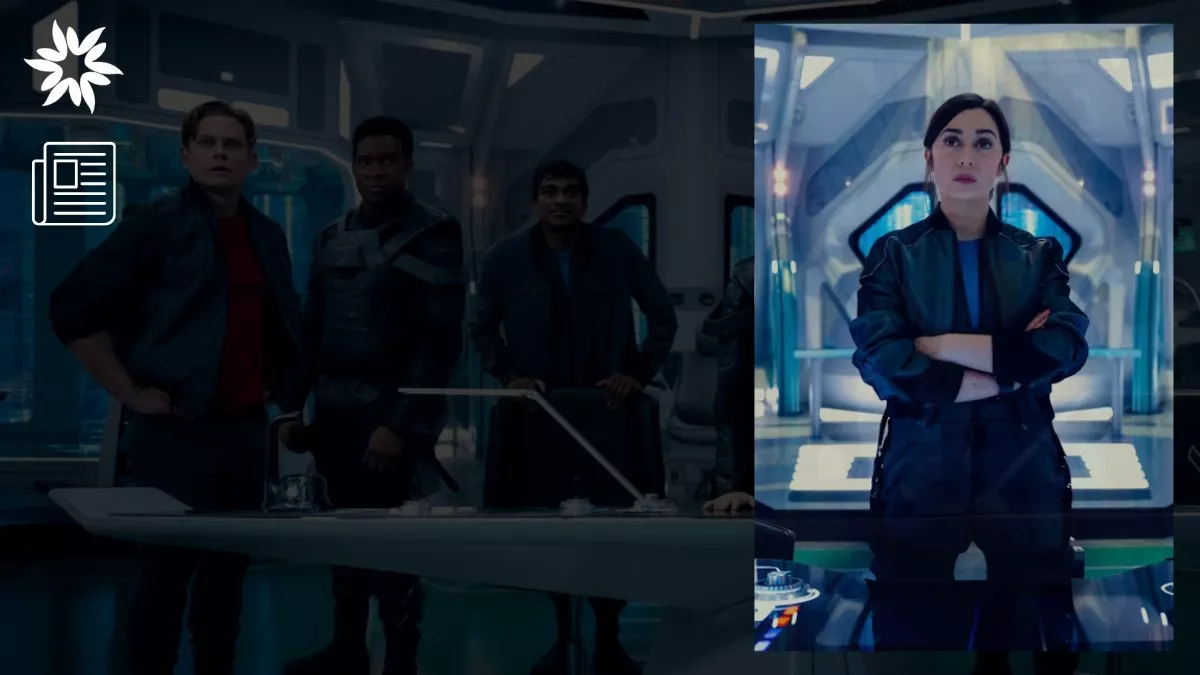Black Mirror returned to Netflix on April 10 with six new episodes. This seventh season revisits the show’s core idea—how technology can affect human lives in dark and unexpected ways. Charlie Brooker, the show’s creator, includes new themes, returning characters, and several links to earlier episodes. Each episode has a different setting and cast, but all share one idea: what happens when technology goes too far?
Here is a full breakdown of each episode, ranked from weakest to strongest, based on their story, relevance, and execution.
Key Takeaways
- "Common People" is the strongest episode, directly criticizing subscription-based healthcare and digital control over human lives.
- Season 7 reconnects with Black Mirror’s core themes, focusing on technology’s emotional, ethical, and societal effects through stories like Eulogy and Plaything.
- The season includes direct links to earlier episodes, expanding the shared universe with detailed Easter eggs, character callbacks, and repeated tech brands like TCKR and Streamberry.
#6: Hotel Reverie
Episode 3 | Runtime: 77 minutes
Main Cast: Issa Rae (Brandy), Emma Corrin (Clara/Dorothy)
Setting: A digitally recreated 1940s Hollywood film set
In Hotel Reverie, studios use new AI software to recreate old black-and-white films. This software can create AI characters who live only in the movie world and don’t know they are programs. It also allows real actors to appear in these movies using a head chip.
Brandy (Issa Rae) is placed inside an AI film titled Hotel Reverie. She must follow the movie’s script exactly to survive and exit the simulation. However, when she goes off script, the system malfunctions. One AI character, Clara (Emma Corrin), eventually realizes she is not real and is actually the long-dead actress Dorothy.
The episode accurately shows concerns about AI in the film industry. The visuals match the look of 1940s cinema with heavy use of light diffusion. But despite the impressive concept, the acting chemistry between the leads is weak. The story feels disconnected from Black Mirror’s usual tone.
Key References:
- Brandy watches a video by Pia from Loch Henry
- A staff member wears a Space Fleet shirt (from USS Callister)
- The computers come from TCKR, a company also seen in San Junipero
- The episode ends with a package from “Kimmy” addressed to “Junipero Drive”
- The film premieres on Streamberry, first seen in Joan is Awful
#5: Plaything
Episode 4 | Runtime: 46 minutes
Main Cast: Peter Capaldi (Older Cameron), Lewis Gribben (Young Cameron), Will Poulter (Colin Ritman cameo)
Setting: London, near future
Plaything follows Cameron Walker, who becomes obsessed with a strange 1990s game called Thronglets. The game was made by Colin Ritman, a character from Bandersnatch. Instead of normal gameplay, it lets users raise digital creatures with personalities.
Young Cameron starts expanding the game using more hardware. Eventually, he implants a port in himself to connect directly with the Thronglets. When someone harms the digital creatures, he kills them, showing how real the game has become for him.
Peter Capaldi plays the older version of Cameron, reflecting on how much of his life he gave to this game. While the concept is strong and fits Black Mirror’s style, the ending is sudden and lacks closure.
Key References:
- Colin Ritman from Bandersnatch appears briefly
- Tuckersoft posters include references to The Waldo Moment and Striking Vipers
- A real version of Thronglets was released on Android and iOS via a QR code
#4: Bête Noire
Episode 2 | Runtime: 50 minutes
Main Cast: Siena Kelly (Maria), Rosy McEwen (Verity)
Setting: A candy company called Ditta
In Bête Noire, Maria works at a snack company and becomes suspicious when her old classmate Verity joins her workplace. Verity was known for her tech skills in school. Maria believes Verity is now using computers to control her life—editing her emails, texts, and even her surroundings.
As the story continues, Maria begins to question her own sanity. Verity reveals she is using a quantum compiler to shift Maria’s reality. In a final act of revenge, Maria turns the technology back on Verity.
Netflix released two versions of this episode, each with slight differences, to reflect Maria’s confusion. Though the episode follows Black Mirror’s typical setup, the ending leans more toward fantasy and feels less grounded.
Key References:
- Barnie’s Chicken appears again (from Shut Up and Dance and White Christmas)
- Ditta shares its office building with Tuckersoft (Bandersnatch)
- Almond milk in the office is “Raiman” brand (from Men Against Fire)
- Verity’s old job was with WayHaven Travel (Shut Up and Dance)
- The compiler tech is similar to the quamputer in Joan is Afraid
#3: USS Callister: Into Infinity
Episode 6 | Runtime: 90 minutes
Main Cast: Cristin Milioti (Nanette), Jimmi Simpson (Walton), Jesse Plemons (Robert Daly – referenced)
Setting: A virtual universe created by a video game
This episode is a direct sequel to Season 4’s USS Callister. After the death of Robert Daly, the crew of the USS Callister—now led by Captain Nanette Cole—find themselves in a digital universe with 30 million players.
The new storyline includes fast-paced action and survival as the crew tries to avoid being deleted by hostile players. The production values are high, with strong visual effects and sound design. However, it lacks the emotional depth and originality of the original episode.
Key References:
- Nanette is shown comatose in St. Juniper hospital (San Junipero)
- Players from Demon 79 appear
- The final news broadcast ties together stories from all previous seasons, including:
- Thronglets 2 launch
- Hotel Reverie on Streamberry
- A talisman from Demon 79
- Michael Callow (National Anthem) attending vet school
#2: Eulogy
Episode 5 | Runtime: 47 minutes
Main Cast: Paul Giamatti (Phillip), Patsy Ferran (Memory Guide)
Setting: A company that allows users to explore memories
In Eulogy, Phillip uses a new technology that allows him to physically step into old photographs. The company hopes this process will help him recover lost memories of his late partner. As he walks through these virtual spaces, he uncovers painful truths he had forgotten or chosen to ignore.
The episode focuses on grief and memory rather than big tech. It’s quiet and emotional, showing how people cling to the past. Paul Giamatti’s performance is especially strong, and the story feels real despite the futuristic technology.
Key References:
- The memory-viewing device is also used in Hotel Reverie and The Entire History of You
#1: Common People
Episode 1 | Runtime: 57 minutes
Main Cast: Rashida Jones (Amanda), Chris O’Dowd (Mike), Tracee Ellis Ross (Gaynor – Rivermind rep)
Setting: Near-future society with privatized healthcare via tech
Common People is, by far, the most impactful episode of the season. Amanda, a schoolteacher, suffers a brain injury and falls into a coma. Her husband, Mike, agrees to a medical procedure by Rivermind that transfers a copy of Amanda’s mind to a server while her brain is repaired.
To keep Amanda functioning, they must pay a monthly subscription fee. Over time, the service becomes more expensive. Amanda begins speaking in advertisements, sleeps more to save server energy, and risks losing her teaching job.
The episode criticizes the subscription model used by many modern services. It also mirrors how healthcare systems are becoming more expensive and controlled by tech companies. The ending is tragic, showing how Amanda and Mike are drained by a system they cannot escape.
Key References:
- The Juniper Lodge refers to San Junipero
- Amanda sings “Anyone Who Knows What Love Is” (used in multiple past episodes)
- In class, Amanda references robotic bees (Hated in the Nation)
- Ditta candy from Bête Noire appears in the vending machine
- A user named I_AM_Waldo (from The Waldo Moment) appears online
- Movie posters for Hotel Reverie appear in the background








